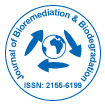Our Group organises 3000+ Global Events every year across USA, Europe & Asia with support from 1000 more scientific Societies and Publishes 700+ Open 91��ɫ Journals which contains over 50000 eminent personalities, reputed scientists as editorial board members.
Open 91��ɫ Journals gaining more Readers and Citations
700 Journals and 15,000,000 Readers Each Journal is getting 25,000+ Readers
Citations : 7718
Indexed In
- CAS Source Index (CASSI)
- Index Copernicus
- Google Scholar
- Sherpa Romeo
- Open J Gate
- Genamics JournalSeek
- Academic Keys
- JournalTOCs
- ResearchBible
- China National Knowledge Infrastructure (CNKI)
- Ulrich's Periodicals Directory
- 91��ɫ to Global Online Research in Agriculture (AGORA)
- RefSeek
- Hamdard University
- EBSCO A-Z
- OCLC- WorldCat
- SWB online catalog
- Publons
- Geneva Foundation for Medical Education and Research
- MIAR
- ICMJE
Useful Links
Recommended Journals
Related Subjects
Share This Page
In Association with
Modelling systems for the Anaerobic Digestion of Abattoir and Piggery Effluent and subsequent generation of methane
Joint Event on 12th World Congress on Biofuels and Bioenergy & 13th Global Summit and Expo on Biomass and Bioenergy
Katherine Montgomery
RMIT University, Melbourne
Posters & Accepted Abstracts: J Bioremediat Biodegrad
DOI:
Abstract
Anaerobic systems are advantageous for the treatment of industrial effluent for multiple reasons, but there is limited software available to monitor and predict the performance. Software, such as ‘BioWin’ can be used to estimate the percentage of gas methane generated, as well as the reduction in Chemical Oxygen Demand (COD), Total Suspended Solids (TSS) and other influent parameters. This research has then been applied to two unique sites and scenarios in Australia to test the accuracy and validity of this modelling procedure. One site is operated by a large regional water board, with two anaerobic lagoons used to treat high temperature effluent from a red meat abattoir. The other site features a large covered lagoon which is used to treat effluent from piggeries, which is much lower in temperature, but less contaminated by fats, oils, and greases (FOG’s). By modelling these scenarios, several conclusions can be made about the accuracy of BioWin modelling for anaerobic digestion and methane generation. Firstly, there are issues with the estimation of the TSS and this prediction often varies significantly from the observed site data. This difference is likely because BioWin is designed to model municipal effluent, as opposed to industrial abattoir effluent. Despite this limitation, the COD estimation and HRT (Hydraulic Retention Time) are very accurate. Additionally, the piggery effluent is more accurately modelled that the red meat effluent, as there are less FOG’s in the effluent. A literature review in this field illustrated that red meat effluent presents problems, since a scum layer of FOG’s form on the surface of the lagoon, which prevents full COD degradation and hence reduces the biogas yield. It should be noted that the climatic conditions have a significant impact on the efficiency of treatment, and the high temperature and low rainfall of the sites in Australia present ideal conditions for maximal methane generation. Hence there is a potential requirement for anaerobic lagoon/tank heating within Europe. Despite this limiting factor the use of anaerobic digestion technology is widespread in countries like Germany.Biography
E-mail: Khmontgomery@outlook.com
